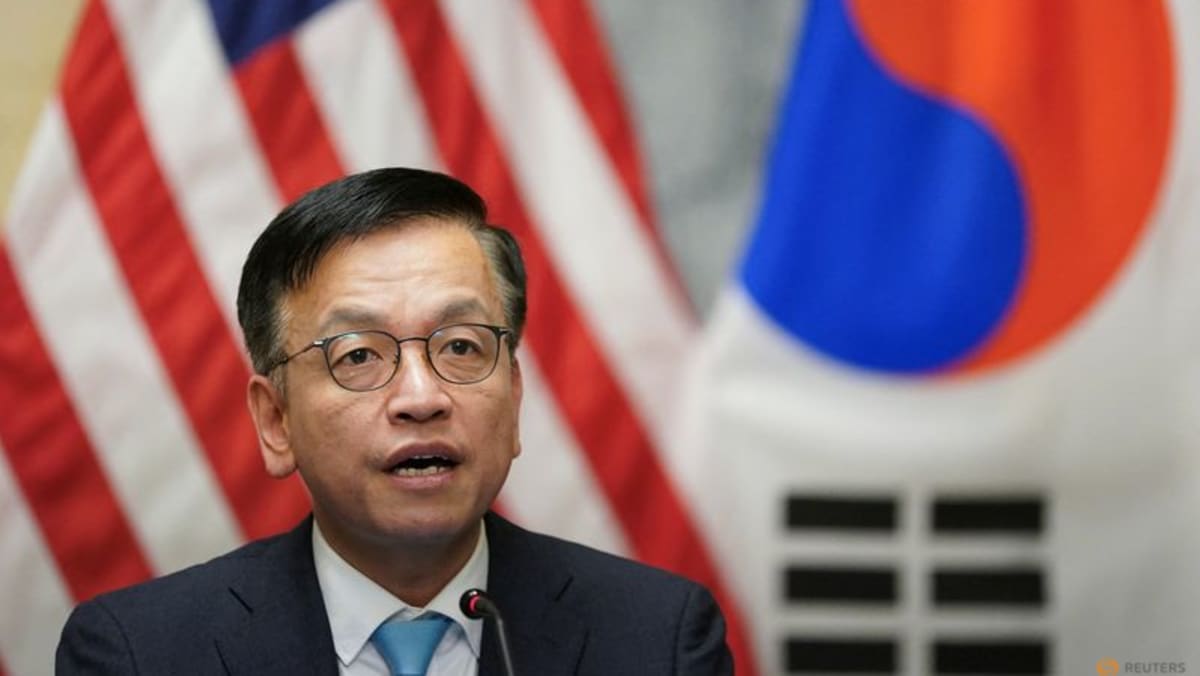Asia
South Korea to review non-tariff barriers to respond to US reciprocal tariff plan

South Korea Preparing to Address U.S. Reciprocal Tariffs
Introduction: Understanding the Context
South Korea is taking proactive measures in response to the United States’ proposal to introduce reciprocal tariffs on countries that impose taxes on U.S. imports. This move by the U.S. could potentially affect several key trading partners, including South Korea, China, Japan, and the European Union. South Korea’s acting president, Choi Sang-mok, has emphasized the need for a thorough review of non-tariff barriers and other vulnerabilities to effectively respond to this U.S. plan.
Economic Impact of Reciprocal Tariffs
The impact of these reciprocal tariffs on South Korea’s economy is expected to be minimal, primarily due to the Korea-U.S. Free Trade Agreement (KORUS FTA), which has significantly reduced tariff rates between the two nations. Choi Sang-mok highlighted that while the immediate effects of the tariffs may not be substantial, the U.S. has also indicated its intention to assess non-tariff barriers, such as value-added taxes and taxes on digital services. This has prompted South Korea to closely monitor the situation and prepare a comprehensive response.
The Role of the KORUS FTA
South Korea and the U.S. have a long-standing trade relationship, with the KORUS FTA playing a crucial role in reducing tariffs and fostering economic collaboration. Among the top 15 U.S. trading partners, South Korea has the second-highest tariff rates after India. However, nearly all these tariffs were eliminated under the KORUS FTA, which was first signed in 2007 and revised in 2018 during President Trump’s first term. This agreement has been instrumental in shielding South Korea from the potential repercussions of the U.S. reciprocal tariffs.
South Korea’s Strategic Approach to Addressing U.S. Tariffs
The South Korean government is adopting a strategic approach to mitigate the effects of the U.S. tariff plan. Choi Sang-mok has outlined that the government will identify key areas of U.S. interest and prepare detailed explanatory materials regarding South Korea’s non-tariff barriers. This proactive strategy aims to ensure that the U.S. administration has a clear understanding of South Korea’s trade policies, potentially reducing the likelihood of additional tariffs being imposed.
Market Reaction to Trade Developments
The financial markets have responded positively to the developments in the U.S.-South Korea trade relationship. The benchmark KOSPI index has seen a significant rise, increasing by nearly 3% this week to reach its highest level since early November. This upward trend reflects investor confidence in the resilience of South Korea’s economy and its ability to navigate the challenges posed by the U.S. reciprocal tariffs.
Conclusion: Moving Forward in Trade Relations
In conclusion, South Korea is taking a well-considered and multifaceted approach to address the U.S. reciprocal tariffs. By leveraging the KORUS FTA, closely monitoring non-tariff barriers, and engaging proactively with the U.S. administration, South Korea aims to minimize any adverse effects on its economy. The positive reaction of the financial markets underscores the confidence in South Korea’s strategic measures to safeguard its trade interests and maintain a strong economic partnership with the U.S.